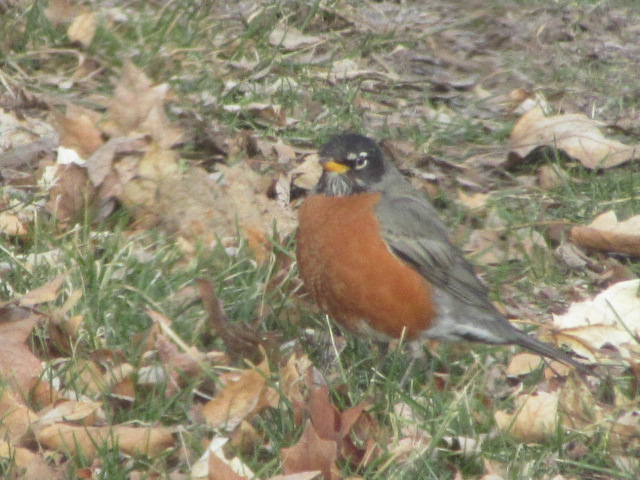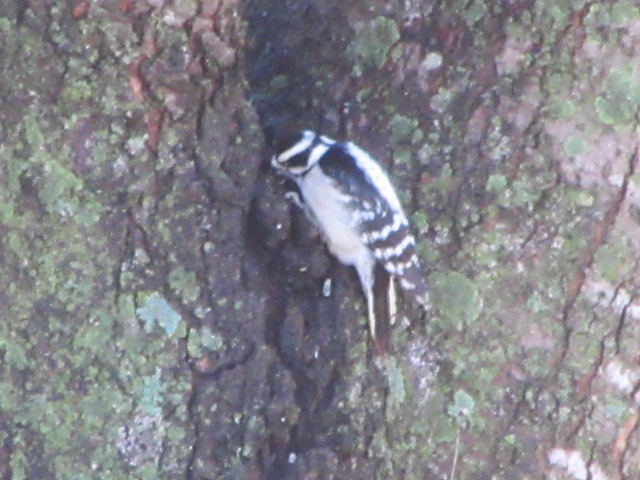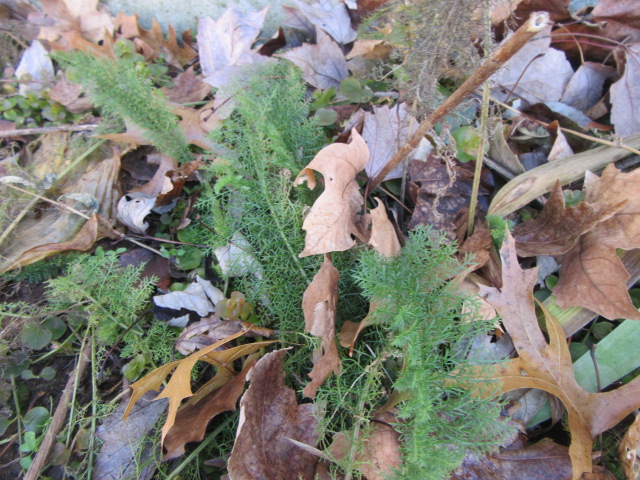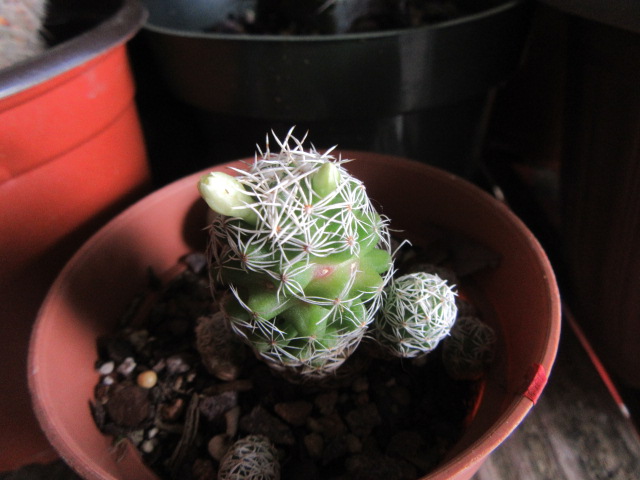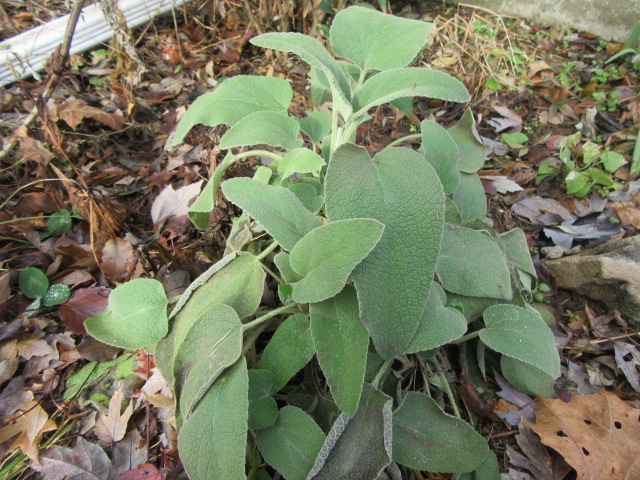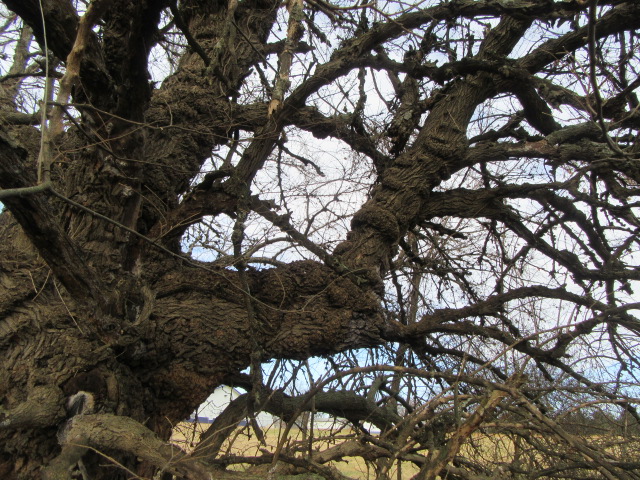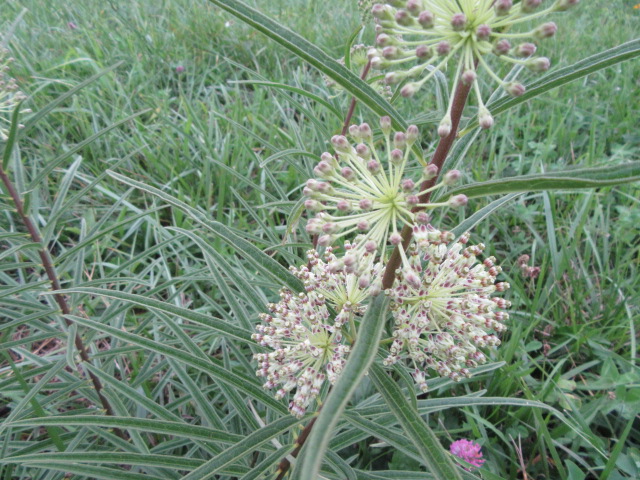
Asclepias hirtella (Tall Green Milkweed)
Hello everyone! I hope you are all doing well. We had a nice week with temperatures not too unbearable at all. I took a walk through the hayfield a couple of days ago to check on the progress of the Elephantopus carolinianus in the back of the farm. It always amazes me how some wildflowers start growing like mad after the hay is cut.
#1-Asclepias hirtella (Tall Green Milkweed)
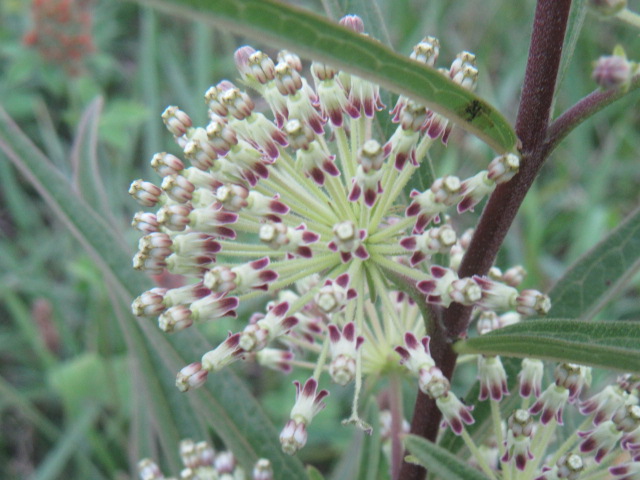
Asclepias hirtella (Tall Green Milkweed)
There were several Asclepias hirtella, the Tall Green Milkweed, blooming again. Normally, they don’t flower the second time but they are this year. I can’t quite figure out why they call this species Tall Green Milkweed when there are other species that grow much taller…
#2)-Elephantopus carolinianus (Leafy Elephant’s Foot)
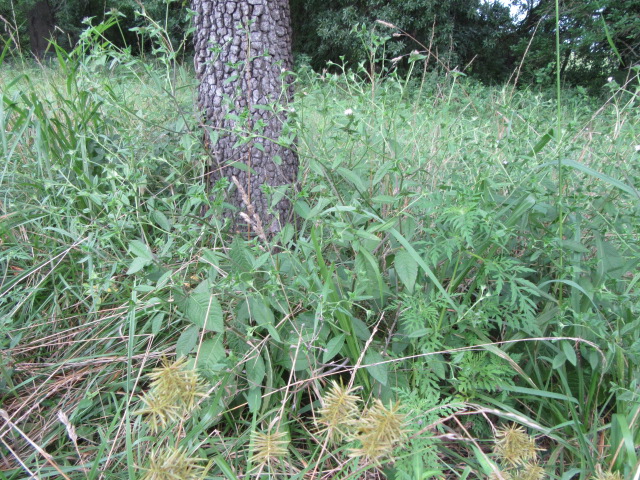
Elephantopus carolinianus (Leafy Elephant’s Foot) under the persimmon tree.
I have walked to the back of the farm several times over the summer to check on the progress of the Elephantopus carolinianus (Leafy Elephant’s Foot). These are really neat wildflowers that I only noticed growing on the farm last fall after they had already dried up. I found the dried up flowers and leaves in an area that grows up in poison ivy and other brush but I marked the spot…
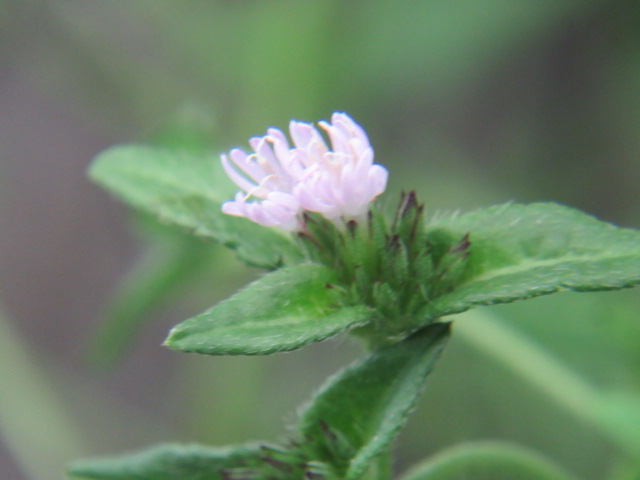
Elephantopus carolinianus (Leafy Elephant’s Foot)
I was very happy when I found a colony under the persimmon tree so I won’t have to walk to the spot I found them earlier. Well, I usually go there anyway… The plants have mostly buds with a few flowers beginning to open up. Until the flowers are fully open, I can’t show you why I think they are so neat.
I walked through the brush behind the ponds to check on the Symphyotrichum lateriflorum (Calico Aster) and S. ontarionis (Ontario Aster) but so far no flowers. At this point, they still look the same. I wouldn’t be surprised if they are both the same species but only time will tell…
#3)-Vernonia missurica (Missouri Ironweed)
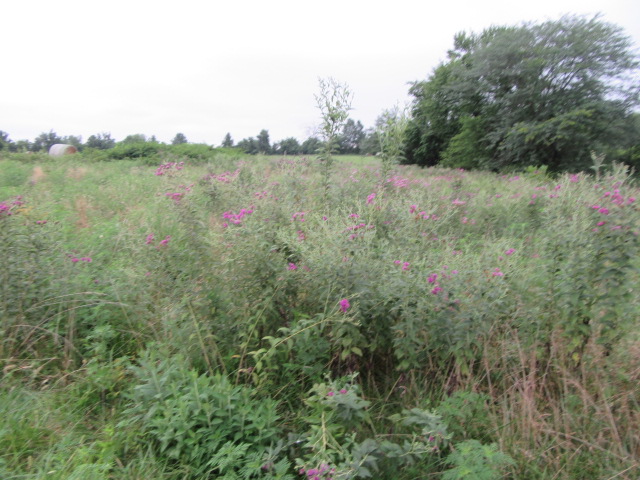
Vernonia missurica (Missouri Ironweed)
This area in front of the two back ponds is LOADED with Vernonia missurica (Missouri Ironweed). The wind was blowing so there wasn’t as much activity on the flowers as usual.
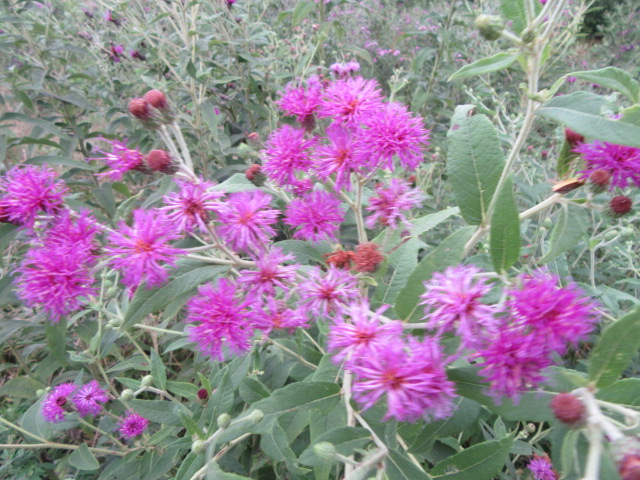
Vernonia missurica (Missouri Ironweed)
The above photo isn’t that great because, as I mentioned, the wind was blowing… Many species of butterflies and other insects love ironweeds. Later on, they will be swarming with Monarch Butterflies and the always interesting hummingbird moths.
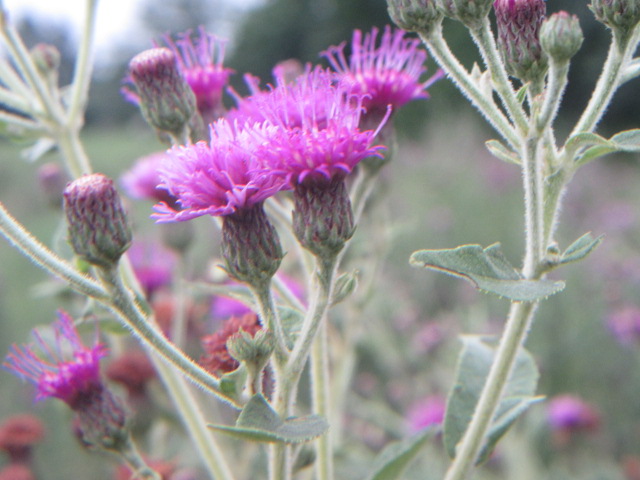
Vernonia missurica (Missouri Ironweed)
The Vernonia baldwinii (Baldwin’s or Western Ironweed) grow in another area. Baldwin’s Ironweed have recurved involucral bracts where Missouri Ironweed’s bracts are appressed. To be honest, some of the flowers in this colony have recurved bracts and some don’t… The two species do hybridize which can drive a person batty…
#4-Symphyotrichum novae-angliae (New England Aster)
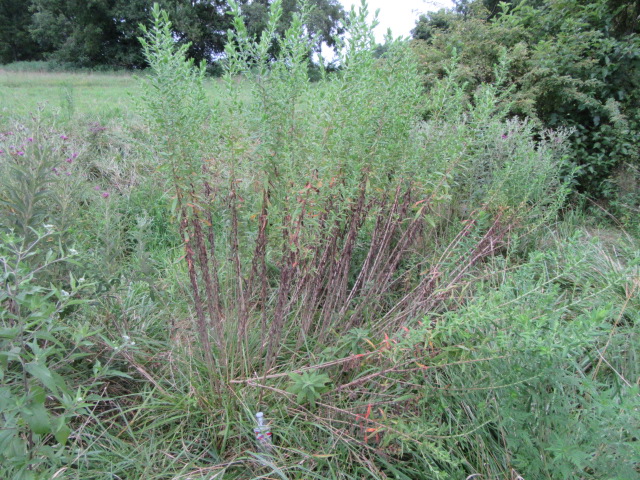
Symphyotrichum novae-angliae (New England Aster)
I walked to the pond in the front pasture to check on the Symphyotrichum novae-angliae (New England Aster) which is also a late bloomer. They are also kind of late to come up in the spring which had me wondering if they survived the winter. The New England Aster grows to over 6′ tall. I put a water bottle at the base of the plant for size comparison…
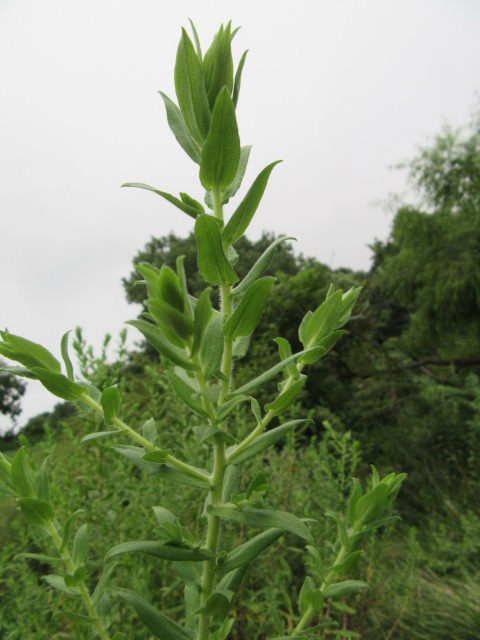
Symphyotrichum novae-angliae (New England Aster)
I only found this species last fall because we had a late “F” and the flowers are pink. Their clusters of flowers caught my attention from quite a distance. I am hoping the same will be true this fall. They are working on it.
#5-Verbesina virginica (White Crownbeard/Frostweed)
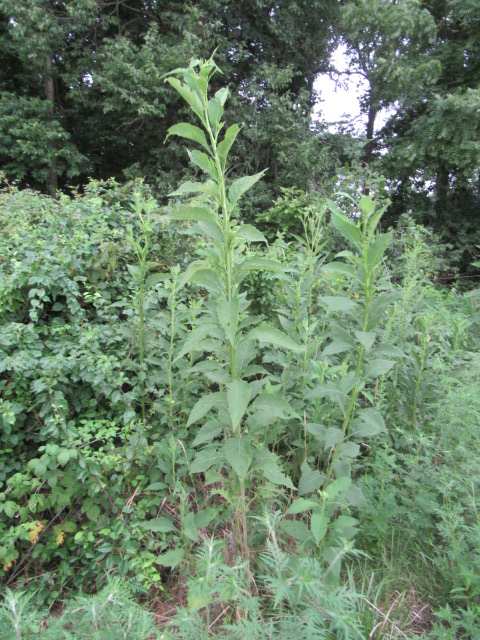
Verbesina virginica (White Crownbeard/Frostweed)
One of my favorite wildflowers on the farm is the Verbesina virginica also known as White Crownbeard and Frostweed. These are also very tall plants that grow much taller than me… They are always in the same location every year.
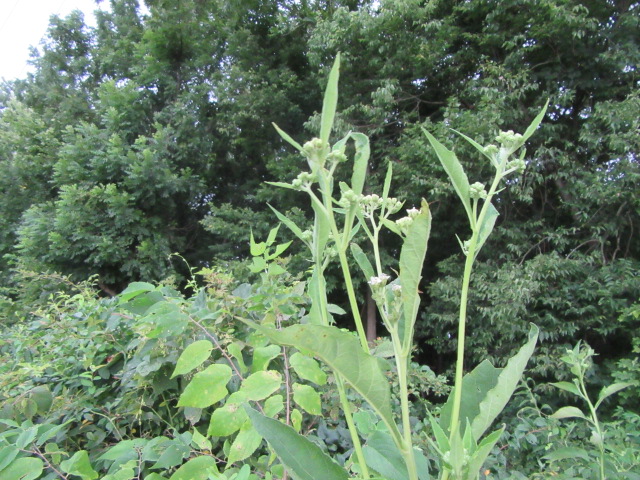
Verbesina virginica (White Crownbeard/Frostweed)
They aren’t exactly early bloomers either, but they are getting there.
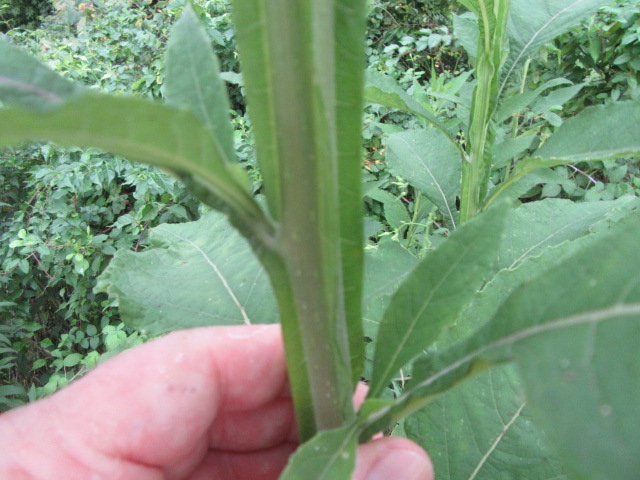
Verbesina virginica (White Crownbeard/Frostweed)
They do have neat white flowers in time, but the neatest thing is their winged stems and very long leaves.
#6-Strophostyles helvola (Amberique Bean)
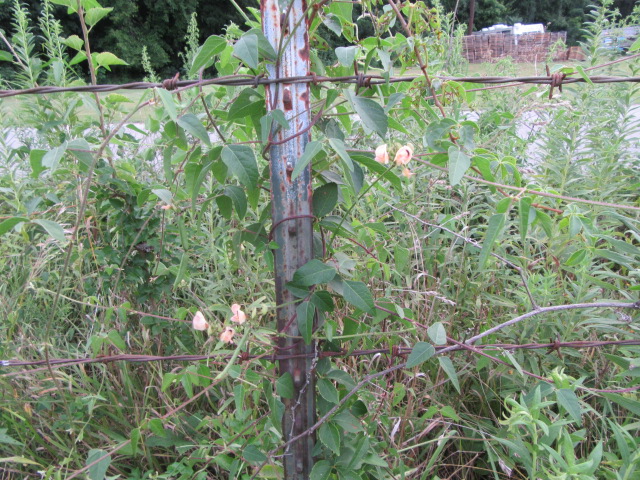
Strophostyles helvola (Amberique Bean/Trailing Fuzzy Bean)
Even though seeing the Elephantopus carolinianus beginning to flower was exciting, I believe the find of the day was the Strophostyles helvola (Amberique Bean/Trailing Fuzzy Bean). The first time I found this species there were only a few flowers and the leaves had all dried up. Since then, I have kept an eye on them. This year I found a few growing closer to the gate and was able to get some good photos.
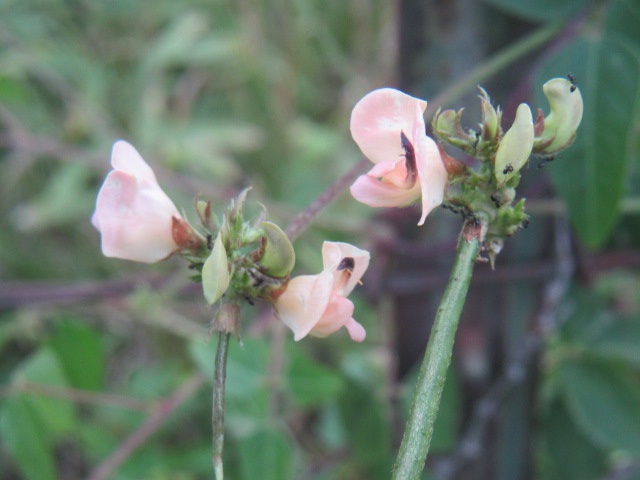
Strophostyles helvola (Amberique Bean/Trailing Fuzzy Bean)
From a distance, they resemble an off-color sweet pea. I kind of like this color much better than pink. 🙂
That completes my Six on Saturday kindly hosted by The Propagator. Be sure to check out the other Six on Saturday posts.
Well, I better get going for now. Until next time, be safe, stay positive, and always be thankful. Be sure to get dirty if you can!
